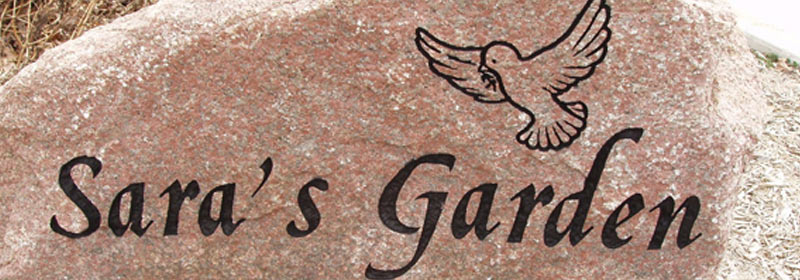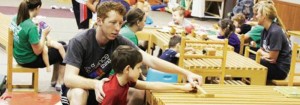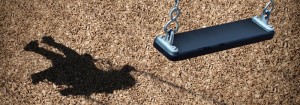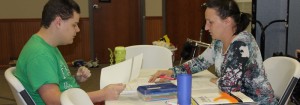Center Offers Alternative Therapy for Victims of Brain Injuries
Article published Monday, April 4, 2005 by the Toledo Blade
Sara Burkholder’s death had the makings of a lawsuit.
The athletic, 25-year-old English teacher died of internal bleeding during the birth of her first child. Amniotic fluid flowed into her bloodstream, robbing her blood of its ability to clot. The traumatic birth left her son, Jackson, now 3, with cerebral palsy. He cannot talk. He cannot walk.
Yet instead of going to court, her family – the Burkholders and the Rycheners – went to churches and community groups with a dream. They would create a nonprofit, alternative medical center in Fulton County to offer a treatment they believe is helping Jackson.
This morning that dream comes true with a ribbon cutting for Sara’s Garden in Wauseon, where children and adults suffering from brain injuries can receive treatments called hyperbaric oxygen therapy.
But the therapy, which supplies pure oxygen to people during a simulated deep-sea dive, is unproven for neurological treatment in the eyes of medical experts, said Don Chandler, executive director of the Undersea and Hyperbaric Medical Society, the premier medical association for hyperbaric therapy.
“We’ve always been very cautious. It’s still looked on as experimental, and we don’t have enough scientific evidence,” Mr. Chandler said.
There is scant published research addressing the use of increased atmospheric pressure to treat strokes, cerebral palsy, and similar injuries.
In fact, research supports the use of hyperbaric chambers in only a few areas, including wound care, carbon monoxide poisoning, therapy for the bends in divers, and treatment of tissue damaged by radiation therapy.
But don’t make that argument with Judy Burkholder, a registered nurse and Jackson’s paternal grandmother. Medicine is full of treatments with doubtful benefit to patients, she says.
She points out that insurance and other assistance will pay for only short bouts of physical therapy for Jackson. “I would challenge you to find any studies that prove that occupational and physical therapy for 20 minutes a week will make a difference in my child,” she said. Yet hyperbaric oxygen therapy brought profound improvements in her grandson’s life, she said.
“He was a year old, and he could do nothing. If you stood him up in a toddling position, he couldn’t lift his legs. He was falling off the growth chart. A neurologist told us he would probably be mentally retarded and need a feeding tube, orthotics, lifts, wheelchairs, all these appliances,” she said.
But on his third day of hyperbaric treatment, his lagging appetite surged. The 1-year-old ate three meals that day instead of one.
“In nine months, he gained 7 inches and 7 pounds. He’s in the 50th percentile in weight and over 100th percentile in height. Contrary to what the neurologist believed, he is not mentally retarded,” Mrs. Burkholder said.
He cannot speak, but he can touch cards that provide the appropriate responses to questions.
When Jackson began hyperbaric therapy, he could see, but he wasn’t aware. “That has changed. That’s huge,” Mrs. Burkholder said.
“The medical community would say all these things are anecdotal. I would tell them I don’t care. … I’m a nurse. I was very careful when we first went to get treatment, and I documented all the changes that I saw. There was no doubt in my mind the changes that took place could not be attributed to development. Developmental things take time. This happened overnight,” Mrs. Burkholder said.
Despite the confidence organizers of Sara’s Garden have in hyperbaric “dives,” no one is making big promises. Instead, they’re offering hope that maybe, just maybe, this will make a difference for others too.
“In some eyes, it can be experimental,” said Scott Frederick, a Wauseon physician who is medical co-director of Sara’s Garden with Alan Rivera, a physician in West Unity in Williams County. “This is kind of like a new frontier. It may be a possible therapeutic regimen for these people. This is just the beginning.”
Once chamber pressure is increased for the simulated dives, it can be decreased only gradually, so a patient who would have a medical emergency during treatment, such as a seizure, would have to wait until proper pressure is gradually restored.
Patients undergoing this therapy at Sara’s Garden duck into what looks like a big propane tank and take a seat. Air pressure is raised to no more than 29 pounds per square inch – the equivalent of diving to 33 feet – but people in the tank feel nothing more than a little pressure in the ears, like what is experienced in flight. The patient wears a clear plastic hood that looks as if were borrowed from the animated movie character Buzz Lightyear. The helmet, which delivers pure oxygen, is sealed so the oxygen cannot escape into the chamber. Chamber sensors will detect an increase of oxygen above the normal 21 percent level. The chamber depressurizes in the event of an oxygen leak.
Sara’s Garden will charge $100 per dive, a price leaders hope will cover operating expenses. Because treatments can require multiple dives, that $100 adds up quickly. Jackson has dived 96 times.
The Burkholder and Rychener families are not the first to open a nonprofit hyperbaric facility after sending a child for such treatment. “How do you think these places around the country have opened?” asked Paul Harch, who practices hyperbaric medicine in New Orleans. “They’re all over the place, and they’re started by parents.”
In 1970, there were about 30 hyperbaric centers, said Mr. Chandler of the hyperbaric medical society. “Now there are over 500 that we know about, and there are a lot . . . we don’t even know about. We know it’s going on. We refer to it as the cottage industry.”
A study by researchers at the University of Mississippi using rats seemed to suggest promise for hyperbaric therapy. The work, published in the journal Brain Research in 2002, subjected rat pups to oxygen loss. Some of the rats were treated with hyperbaric oxygen therapy after an hour of diminished oxygen. Animals treated with hyperbaric therapy suffered less brain atrophy and cell death, researchers said.
But a study published that same year in the journal Developmental Medicine and Child Neurology provided 40 sessions of hyperbaric oxygen therapy to children diagnosed with cerebral palsy. A second group of children received oxygen therapy at only slightly elevated atmospheric pressure. Children in this Montreal study all showed improvement in attention and working memory, but there was no difference between the children under higher atmospheric pressure and those under only slightly elevated pressure.
But the Burkholder and Rychener families aren’t worried about these debates. They’re busy making Sara’s Garden grow.
The Sara’s Garden board hopes to build a house just east of the 1950s vintage office building that Sara’s Garden occupies on West Leggett Street. This would be called Jackson House and serve as a home for out-of-town families during hyperbaric treatments. The board also hopes to offer other therapeutic services at Sara’s Garden.
But the family’s most profound desire for Sara’s Garden is that it will give glory to God. They feel, they said, that God used Sara Burkholder’s death to call them to help others through Sara’s Garden.
“If Sara hadn’t died, if Jackson didn’t have cerebral palsy, would we have been motivated to do this?” Judy Burkholder asked.
And if the family had sued the local hospital and used such proceeds to build Sara’s Garden, would that have been an appropriate start to such a mission? The Burkholders say the blessing of community donations is far better than the heartache of a lawsuit – and far more in keeping with the life Sara Burkholder lived.
“Sara would have gladly died and had her child have cerebral palsy if it could bring one person to God,” her husband, Jay, said.







